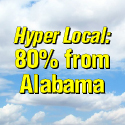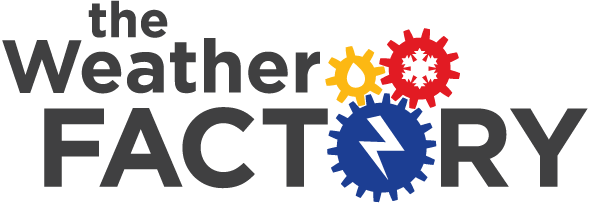12 UTC models
No big changes in the 12 UTC model runs. It looks like sunshine may be limited tomorrow…which is good news for keeping the instability a little lower. Still, CAPE’s of 1,500 J/kg are likely as far north as BHM, with dewpoints in the upper 60s. If the sun comes out tomorrow morning and temperatures go to 80, CAPE could get way abovd 2,000.
The models still show surface low development in south Mississippi during the afternoon, and the low moving into north Alabama by afternoon. If this happens (and confidence is increasing), it would increase low-level shear during the afternoon and evening. Storm-relative helicities are forecast to near 300 m2/s2 from BHM north between 1 and 7 pm. So, the strongest shear is north, and the best instability is south.
A measure of the combined effects of the two, known as the energy-helicity index (EHI), shows where the most favorable overlap occurs for severe storm and tornado potential. Values over 1 are considered to be sufficient for rotating storms, and values over 2 would mean a couple of strong tornadoes are possible. However, these values are not like the 4-5 EHI values sometimes seen in May in Oklahoma. Below is the GFS model EHI for tomorrow at 7 pm.
According to this model, the best combination of instability and shear will be in central Alabama.
It still looks like a squall line will come through after sunset tomorrow. But, with all the instability and shear in the afternoon ahead of the line, if any scattered storms can get going, they would have a higher tornado threat. SPC maintains only a slight risk, probably based on the lack of any really high shear. I still expect an upgrade to moderate risk later, if the models continue to show the surface low.
Category: Uncategorized















